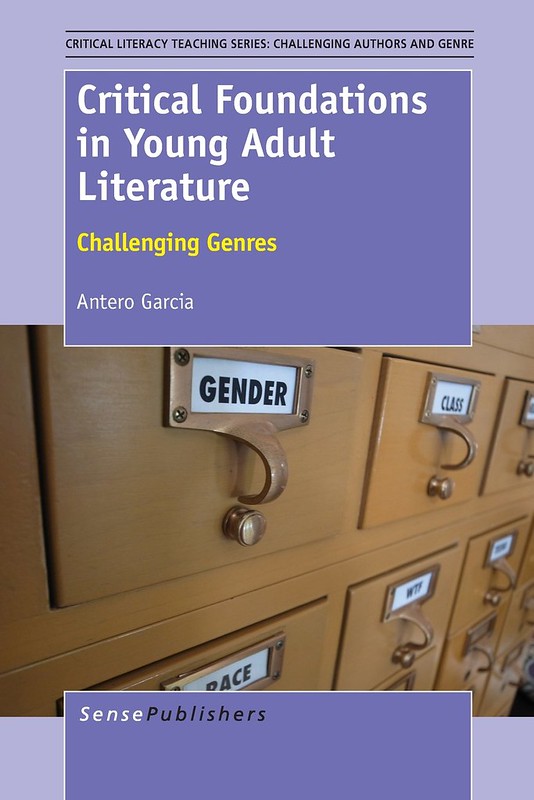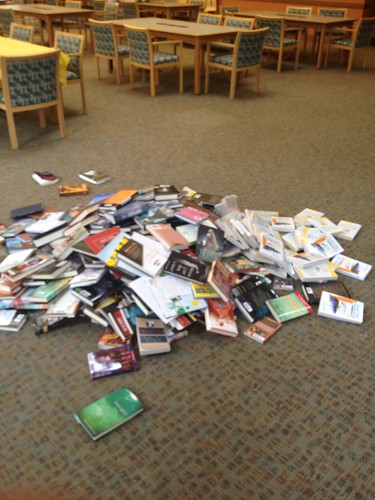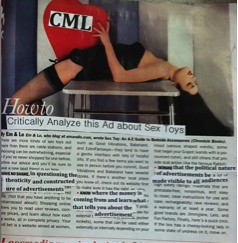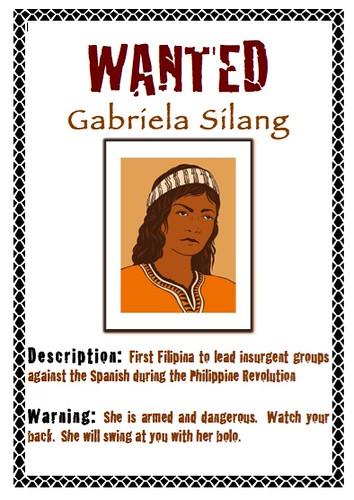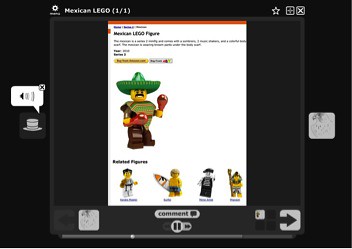
Chad’s awesome map – credit: davesmapper.com
Over the summer I was thrilled to join an Educator Innovator webinar discussing some of my classroom work with Suzie Boss. In doing so, it was awesome to get to virtually hangout with NWP superstar Chad Sansing (I would highly recommend subscribing to Chad’s blog).We’ve since been discussing gameplay and exploring elements of game design in ways that will merit future posts. At one point Chad mentioned that he ran a D&D campaign for his middle school students. As I am currently looking at the learning principles and literacies enacted in tabletop roleplaying games, I asked Chad to describe his gaming experience with his students. This is the first of several posts that find Chad discussing his innovation as a gamer and educator.
What games did you play? What edition?
Last year, during the 4th 9 Weeks, several kids at school asked for a D&D club during advisory time. Serving as nerd-in-residence, I agreed to host the club and run the campaign. One student began a self-directed learning project to become the DM – or dungeon master – a kind of show runner for the game’s campaign (or season, if you will). However, she ultimately decided to remain a PC, or player character, and spent language arts class reading the Mortal Engines series, so I couldn’t complain. I became the house DM, in much the same way that other teachers serve as permanent pitchers or quarter backs during games at recess.
We played a mutt version of the game. I signed up for the official online D&D resource and used it to help kids create characters. I also used Dave’s Mapper to create some of the larger maps used in our campaign. Other maps, I drew by hand on graph paper, the same way I began in 2nd grade while playing Gamma Riders at LatchKey in the morning. In fact, during our campaign, I found some of my maps from late elementary school or middle school in a box in my parents’ basement. Ah, life.
Since we were using the up-to-date online resource, our characters were created through menus and algorithms referencing the game’s 4th edition rules set. The last time I played, I used 2nd edition rules. At no time have I ever cared about movement or encumbrance. Essentially, we used a twenty-sided die (d20) rolled against our opponents’ defenses or the number we needed to roll to achieve a specific task. The time that praying-mantis ore-smuggler hijacked negotiations with the Dwarven navy and somehow rolled two natural 20s in a row to avert a disastrous strike on an Elven grain ship remains the stuff of legend. Natural 20s happen when a player rolls a 20 on a d20 without any modifiers buffing or debuffing her chances. Essentially, if you roll a d20, you can do anything. Conversely, if you roll a natural 1, no bonus can save you. The DM can do anything she wants to your character or party of adventurers.
Generally, we put story first, community second, d20 rolls third, logic fourth, common sense (a distant) fifth, and all the other rules last. (Having just played Pathfinder for the first time, it occurs to me we essentially played Pathfinder.)
I made it clear that any players wishing to split off of the main party could do so, but that I would finish the main story first before returning to their characters a few months of real time later. That kept everyone together nicely. Also, I discouraged evil characters and evil role-playing. An explicit and repeatedly stated purpose of the group was to be a community and to enjoy our time together as co-creators of an awesome story.
How did the students learn the rules? What things didn’t they get? Did anyone buy their own copies? Dice?
Many kids in the club had played some form of D&D before, usually with a parent or family friend as DM. Everyone seemed to quickly get the idea of using a d20 to roll against target numbers. It was difficult for some students to read all of thew abilities and items listed on their character sheets, so some students spent a lot of time repeating actions that they knew had been successful in the past. Other students and I tried to help by scanning their character sheets and suggesting things to try. The kids wanted their peers to do cool things and generally included everyone who wanted to play each day, though some players kind of wandered in and out of the game until they were sure of actions they could perform. Then they stuck with the game and began to bring in their own bits of humor and story-telling as their anxiety about the rules and playing “correctly” diminished. We had tons of running jokes by the time our campaign finished, and each player had a part in at least one of them.
Before the adventure began, most students wrote back stories – without much help from me – that brought them together on the map I showed them of the campaign world. I asked them to come up with explanations for how they could all wind up in one, particular nation at the same time. All kinds of writing and creativity ensued as we got characters built over the first three or four days of club.
Can you describe the campaign – what was it about, how long did you plan for it to go on, how many players?
I planned the game for 10-15 players and thought it would last for about a nine weeks, or for the entirety of a marking period. We played three or four morning per week (during advisory) for about eight weeks, forty-five minutes at a time. If you count the time we spent developing our characters, rolling new ones as needed, and dividing loot, we probably spent just over 20 hours playing the game, which gives us a total playing time roughly equal to that of the main quest in a typical AAA adventure video game.
How did the campaign change? How did players react?
As the kids came up with ideas I didn’t anticipate – as they decided to travel to places or to take on enemies I thought they would ignore – I had to revise some of my planning and adventure flow-charts so that the kids could attempt to meet their own goals and find entry points back into the rest of the main quest I had designed.
I changed the big bad about halfway through the campaign: I added a co-villain and revised the motivations of the first one. I also improvised the ending to help the players defeat their major antagonists before the end of the school year. I began the game thinking of political and economic struggle, but I ended the campaign thinking of belief and sacrifice thanks to the kids’ decisions.
What did you learn?
Kids want to cooperate and learn with, through, and from people and stories that involve them in personal inquiry, trusting relationships, and opportunities for exploring identity at school. A well designed lesson, unit, curriculum, class, or year is one in which kids feel like adventurers, in which they feel like heroes, and in which they can apprehend the heroism of their peers, some of whom fight awful battles just to be present and to risk being seen and heard.
What did they learn?
I wish I had asked in a semi-formal way. I can only speculate. Natural 1s are bad, but failure is sometimes funny and always safe in our classroom. Natural 20s are good, but sometimes being great at something right off the bat changes what comes next or what’s expected of us. Everyone has something to say, but some of us take more time to find our voices than others. Everyone wants to belong, and we can include them when we decide to be patient, inviting, and kind. Everyone has a sense of humor. Stories are best created together. Community sometimes requires sacrifice, even when sacrifice is just a willingness to be silly in front of others.
I’ll ask around some more.
Did you always DM?
I always ran the game, though the kids really owned and shaped it. I tried to set up interesting constraints and to perform the NPCs well, which required me to run a functioning map of the world, its people, and their interests in the back of my mind. I tried to stress co-creation of the story throughout the campaign. Playing D&D with my kids was like teaching them in a participatory learning environment – without them it would have fallen flat; with too much control on my part, the game would have sucked.
What kinds of players did people play? Any assumed gender stereotypes?
The kids largely played themselves, though a few of my older students attempted more serious role-play, taking into account how their characters would have approached battle, diplomacy, and the other characters. I didn’t hear a lot of gender stereotyping, but the player with the pixie character nearly never hit a target with her miniature cross-bow, which led to frequent, but good-natured, jokes at the expense of her dice rolls. And no one wanted the bug-man to speak, but he often had the highest diplomacy rolls leading to situations where he would say ludicrous things (to the elves: “the dwarves? They LOVE you guys!”) that the NPCs had to believe.
Most players began as friends, but by the end, I think everyone who chose to play felt welcome in the group and spoke and played.
Sadly, we had a few near-total-party-kills and some ill-advised walking across a narrow bridge over an endless pit, so there were many new characters along the way, as well was a lot of fodder for running jokes. As the game went on, kids also opened up and brought humor to their characters. The dwarven beast master who woke up after 700 years of sleep, for example, demanded that the group help him recover his familiar, Cookie the Cat (or bunny?), from the lowest level of the under-city before he would help the group fight the big bad. He figured if Cookie had died, he could have a spirt familiar.
As it turns out, he found Cookie, made her into a spirit familiar, and then sacrificed her soul to open and close a mystical barrier trapping a rainbow dragon the group needed to free. So, yeah. He ultimately went mad and lived out the rest of his life as a bear in the woods.
Middle schoolers are great story-tellers when given the chance over time to find themselves and the multitudes in them.
How did you find time for this and planning and everything else (I’m thinking about just how much time preparing for running a gaming session can take)?
I spent some time on developing a small world map and back story for its nations. Maybe two or three hours. Hand-drawn maps took about 30-45 minutes each. Encounters often took two or three sessions to resolve, so I tried to sketch out loose flow-charts and NPC details for about five encounters at a time. I’d order each set of upcoming encounters in a flow chart and allow for branching paths between the initiating and terminating events in the sequence. I probably spent 20-30 minutes planning per day during the campaign. It felt like planning participatory learning experiences, which I love, and involved a lot of performance and improv, which might be the parts of my teaching that I enjoy (but downplay) the most. Planning for the game also seemed very manageable because of the schedule I had last year, which left me time for writing and supporting other classrooms after I finished my teaching for the day before lunch. I have a much more traditional and full schedule this year, but I would still leap at the chance to plan nearly any kind of participatory learning club, regardless.
Thanks, Chad! In the next post, Chad will address some of the specifics of his campaign, its storyline, and the ways students interacted. Stay tuned!
Tell people this is awesome:
